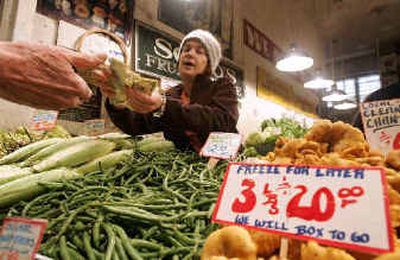Wholesale prices jump sharply

WASHINGTON — Wholesale costs — catapulted by more expensive energy and food — soared last month by the largest amount in more than 14 years.
With inflation at the producer level accelerating sharply after months of being quite well-behaved, chances are rising the Federal Reserve will boost interest rates for a fifth time this year on Dec. 14.
The Producer Price Index, which measures the costs of goods before they reach store shelves, jumped by 1.7 percent in October, compared with a tiny 0.1 percent in September, the Labor Department reported Tuesday. The increase was the largest since January 1990.
Wholesale gasoline and home heating oil prices were up by 17 percent for the month.
“A period of pretty tranquil inflation has passed — with a vengeance,” said economist Ken Mayland, president of ClearView Economics.
Wanting to make sure inflation doesn’t become a threat to the economy, Chairman Alan Greenspan and his Federal Reserve colleagues embarked on a campaign in June to raise short-term interest rates from what had been extraordinarily low levels to more normal ones.
Tuesday’s price report reinforced Fed policy-makers’ conviction that they need to raise rates “before anything bad happens,” said Bill Cheney, chief economist at John Hancock Financial Services.
The Fed thus far has ordered four quarter-point rate increases. The most recent one, last week, left the federal funds rate, the Fed’s main tool for influencing economic activity, at 2 percent.
In the PPI report, excluding energy and food costs, which can swing widely from month to month, core wholesale prices climbed in October by 0.3 percent for the second month in a row.
Looking ahead, most economists don’t foresee big spikes in wholesale prices like the one in October. Although energy prices are likely to remain high, crude oil costs have retreated from record highs.